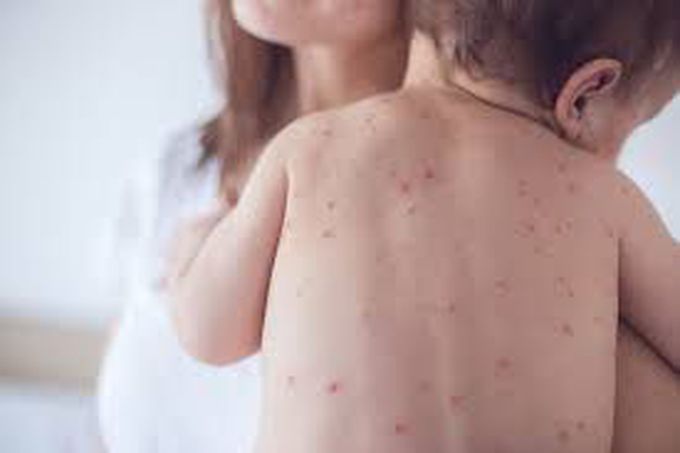


Symptoms of measles
Measles signs and symptoms appear around 10 to 14 days after exposure to the virus. Signs and symptoms of measles typically include: Fever Dry cough Runny nose Sore throat Inflamed eyes (conjunctivitis) Tiny white spots with bluish-white centers on a red background found inside the mouth on the inner lining of the cheek — also called Koplik's spots A skin rash made up of large, flat blotches that often flow into one another The infection occurs in stages over 2 to 3 weeks. Infection and incubation. For the first 10 to 14 days after infection, the measles virus spreads in the body. There are no signs or symptoms of measles during this time. Nonspecific signs and symptoms. Measles typically begins with a mild to moderate fever, often with a persistent cough, a runny nose, inflamed eyes (conjunctivitis) and a sore throat. This relatively mild illness may last 2 to 3 days. Acute illness and rash. The rash is made up of small red spots, some of which are slightly raised. Spots and bumps in tight clusters give the skin a splotchy red appearance. The face breaks out first. Over the next few days, the rash spreads down the arms, chest and back, then over the thighs, lower legs and feet. At the same time, the fever rises sharply, often as high as 104 to 105.8 F (40 to 41 C). Recovery. The measles rash may last about seven days. The rash gradually fades first from the face and last from the thighs and feet. As other symptoms of the illness go away, the cough and darkening or peeling of the skin where the rash was may stay for about 10 days. When can a person spread the measles virus? A person with measles can spread the virus to others for about eight days, starting four days before the rash appears and ending when the rash has been present for four days.

